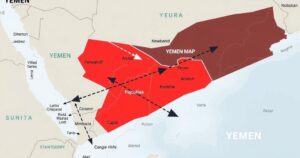Syria: Navigating the Aftermath of Assad’s Brutality

The article reflects on the end of Bashar al-Assad’s brutal dictatorship in Syria and the implications for the country’s future. It discusses the origins of the Syrian revolution, the regime’s suppression of dissent, and the rise of Islamist forces in opposition. Despite hope for a post-Assad era, the article warns of ongoing challenges and complexity, particularly with the influence of groups like HTS and the SNA.
Anand Gopal discusses the brutal history of the Assad dictatorship in Syria and its recent collapse, which surprised many observers. The rise of Hayat Tahrir al-Sham (HTS) raises important questions about the future of the country and the fate of its minorities. The conversation reflects on the origins of the Syrian revolution, the descent into civil conflict, and the potential new political landscape following Assad’s rule.
The Assad regime traces its origins to the Baath Party coup in the 1960s, which sought to forge a state that provided social welfare services. Under Hafez al-Assad, the regime established a social compact—economic redistribution for the poor in exchange for complete political repression. This brutal regime maintained a network of prisons, quashing all dissent.
Bashar al-Assad’s rise in 2000 marked a shift away from the welfare state he inherited. His neoliberal reforms dismantled social provisions while failing to implement political freedoms, leading to widespread discontent. The 2011 peaceful protests, driven by working- and middle-class citizens demanding change, were met with violent repression from regime forces, sparking civil war.
Initially, Assad’s regime relied on Alawites and Sunni bourgeois supporters, yet as rebellion escalated, it exploited fears of minority communities facing extermination. This group, although not supportive of Assad, believed that his fall would lead to their annihilation. By 2012, the regime had consolidated a loyal social base comprised largely of Alawites and other minorities.
The militarization of the revolution led to a shift in opposition ideologies. Political Islam gained popularity as Syrians sought viable solutions to their grievances. Initially, a secular, democratic vision prevailed, but the fragmentation of the revolution saw Islamists emerge as the dominant force due to their perceived integrity and effective response to community needs, contrasting with the corruption of the Free Syrian Army (FSA).
Assad’s support eroded due to long-standing weaknesses exacerbated by recent events, such as Hezbollah’s decline and Russia’s focus on Ukraine. The regime’s internal decay, characterized by rampant corruption and neglect, limited its ability to sustain loyalty among its base. The recent offensive by rebels highlighted this fragility, resulting in a collapse without active opposition strength.
The prospective future of Syria remains uncertain, yet the end of Assad’s regime signals an opportunity for healing after years of brutal dictatorship. This moment of catharsis is palpable, with many Syrians longing for change and some even celebrating in traditionally regime-supporting communities. However, the rise of HTS and the Turkish-backed Syrian National Army (SNA) presents complicated challenges in establishing a stable political environment.
Despite celebrating the defeat of a heinous regime, there are several hurdles ahead. HTS, while attempting to present a reformed image, has a history of suppressing dissent. Concurrently, the SNA poses a threat to Kurdish autonomous regions, further complicating the landscape. The interplay of regional powers, such as Israel, also adds an extra layer of turmoil to an already fragile situation.
The article highlights the significant collapse of Bashar al-Assad’s dictatorship, recognized as one of the most brutal regimes of the 21st century. This change offers a semblance of hope for a more democratic future in Syria after years of civil war and suffering. However, the rise of groups like HTS and the SNA poses complex challenges to stability in the country, suggesting that the road to recovery will be arduous and fraught with potential conflicts. The ultimate resolution for Syria remains indeterminate, with various factions vying for power and influence.
Original Source: jacobin.com







